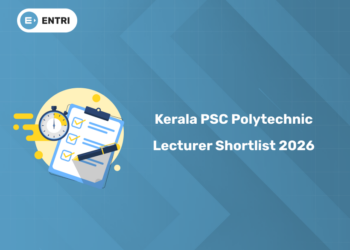Table of Contents
Chandrasekhara Venkata Raman was born in 1888 in a village in southern India. He was an Indian physicist born in the former Madras Province in India. He carried out groundbreaking work in the field of light scattering, which earned him the Nobel Prize for physics in 1930. CV Raman Contribution to Science is a great honour for Indians.
In this article we will discuss the biography, discovery, contributions, awards received, famous quotes and other important facts of the well known physicist Sir C V Raman. Going through this article will be very useful in GK parts for the candidates who are preparing for various competitive exams.
| C V Raman | |
| Full Name | chandrasekhara Venkata Raman |
| Born | 7 November 1888
Tiruchirappalli |
| Died | 21 November 1970, Bengaluru |
| Birth Place | Tiruchirappalli, Madras |
| Father | Chandra shekhar Iyer |
| Mother | Parvathi Ammal |
| Nationality | Indian |
| Education | Presidency College(autonomous), Presidency College(autonomous), St Aloysius’ Anglo-Indian High School |
| Awards | Bharat Ratna, Nobel Prize in Physics, Lenin Peace Prize, Matteucci Medal, Hughes Medal, Franklin Medal |
| Fields | Physics |
| Contribution | Raman scattering resulting from the Raman Effect. |
Attempt Free GK Mock Test! Download Entri App!
Biography of C V Raman
In the modern age there are many scientists who have glorified their mother country. C V Raman is one of them. He is one of the famous scientists in India.
His father Chandra shekhar Iyer was a physics teacher and his mother who came from a family of Sanskrit scholars, Raman exhibited a precocious nature at an early age. At the age of twelve, Raman passed his matriculation in first division.He received a B.A. degree from Presidency College in Madras at the age of 16, placing first in his class and receiving a gold medal in physics. He became a graduate in 1904. In 1907 he passed the M.A examination in physics and he secured the highest marks in the examination. He was awarded a golden medal for his extraordinary performance. Since his childhood he had been an inquisitive boy like J.C Bose. He was not ready to accept anything unless he was fully satisfied. He wanted to know why and how everything happened.
At age 18, while still a graduate student, he published his first scientific paper on “Unsymmetrical diffraction bands due to a rectangular aperture” in the British journal Philosophical Magazine in 1906. His second paper published in the same journal that year was on surface tension of liquids. It was alongside Lord Rayleigh’s paper on the sensitivity of ear to sound, and from which Lord Rayleigh started to communicate with Raman, courteously addressing him as “Professor.”
Because of poor health, he was unable to go to England for further education. With nothing else available in India, in 1907 he passed the Financial Civil Service exam, married, and was posted to Calcutta as assistant accountant general.
Shortly after arriving in Calcutta, Raman began after-hours research at the Indian Association for the Cultivation of Science (IACS). In the first 10 years, working almost alone, he published 27 research papers and led the way for the IACS to become recognized as a vibrant research institute. Much of this early work was on the theory of vibrations as it related to musical instruments. After brief postings in Rangoon and Nagpur, he returned to Calcutta, took up residence next door to the IACS, and constructed a door that led directly into the institute, giving him access at any time. He received research prizes in 1912 and 1913 while he was still a full-time civil servant. He also increased the IACS reputation with his extensive lectures in popular science, holding the audience spellbound with his booming voice, lively demonstrations, superb diction and rich humor.
At the age of 29 he resigned from his lucrative civil service job when Sir Ashutosh Mukherjee, vice-chancellor, Calcutta University, offered him the Palit Chair Professorship. He continued to lecture even though it was not required, and he used the IACS as the research arm of the university. By the time of his first visit to England in 1921, his reputation in physics was well known. Three years later he was elected a Fellow of the Royal Society, only the fourth Indian so honored. That same year he toured the United States, spending four months at the California Institute of Technology through the invitation of Nobel Laureate Robert Millikan.
After discovering the Raman Effect in 1928, he was knighted by the British government in India and received the Nobel Prize in physics in 1930. Three years later, Raman left Calcutta for Bangalore, where he served as head of the Indian Institute of Science. There he continued his work on the Raman Effect and became interested in the structure of crystals, especially diamond. In 1934 he founded the Indian Academy of Science and began the publication of its Proceedings.
In 1948 he became director of the newly constructed Raman Research Institute, where he remained continually active, delivering his last lecture just two weeks before his death. His research interests changed in later years when he primarily investigated the perception of color.
Jagdish Mehra, a biographer, states, “Educated entirely in India, Raman did outstanding work at a time when the small Indian community worked almost entirely in isolation and few made science a career. In fostering Indian science, Raman emerged as one of the heroes of the Indian political and cultural renaissance, along with … Mahatma Gandhi and Jawaharlal Nehru.” But as Raman himself once said, outstanding investigators “are claimed as nationals by one or another of many different countries. Yet in the truest sense they belong to the whole world.”
Awards of C V Raman
- Raman was appointed a fellow of the Royal Society in his career (1924) and knighted in 1928,
- In 1912, Raman received the Curzon Research Award, while still working in the Indian Finance Service.
- In 1913, he received the Woodburn Research Medal, while still working in the Indian Finance Service
- In 1928, he received the Matteucci Medal from the Accademia Nazionale delle Scienze in Rome.
- In 1930, he won the Nobel Prize in Physics for his work on scattering of light
- In 1930, he won the Nobel Prize in Physics “for his work on the scattering of light and for the discovery of the effect named after him.” He was the first Asian and first non-white to receive any Nobel Prize in the sciences. Before him, Rabindranath Tagore (also Indian) had received the Nobel Prize for Literature in 1913.
- In 1930, he received the Hughes Medal of the Royal Society.
- In 1941, he was awarded the Franklin Medal by the Franklin Institute in Philadelphia,
- In 1954, he was awarded the Bharat Ratna.
- In 1957, he was awarded the Lenin Peace Prize.
- Postal Stamps featuring Raman were issued in 1971 and 2009.
- India celebrates National Science Day each year to commemorate the discovery of the Raman effect on 28th February.
Download Entri App and Take free GK mock tests
Quotes of C V Raman
- “I am the master of my failure… If I never fail, how will I ever learn? “
- “Ask the right questions, and nature will open the doors to her secrets”.
- “Treat me right and you will see the light…Treat me wrong and you will be gone!! “
- “You can’t always choose who comes into your life but you can learn what lesson they teach you”.
- “Success can come to you by courageous Devotion to the task lying in front of you”.
- “I strongly believe that fundamental science cannot be driven by instructional, industrial and government or military pressures”.
- “If someone judges you,they are wasting space in their mind…Best part, it’s their problem”.
- “The whole edifice of modern physics is built up on the fundamental hypothesis of the atomic or molecular constitution of matter”.
- “The essence of science is independent thinking, hard work, and not equipment. When I got my Nobel Prize, I had spent hardly 200 rupees on my equipment”.
- “In the history of science, we often find that the study of some natural phenomenon has been the starting point in the development of a new branch of knowledge”.
- “I feel it is unnatural and immoral to try to teach science to children in a foreign language. They will know facts, but they will miss the spirit”.
- “We have, I think, developed an inferiority complex. I think what is needed in India today is the destruction of that defeatist spirit”.
Discovery of C V Raman
1: Who was the first woman President of India?
- C V RAMAN carried out ground-breaking work in the field of light scattering, which earned him the 1930 Nobel prize of physics . He discovered that when light traverses a transparent material, some of the deflected light changes in wavelength. This phenomenon is subsequently known as Raman scattering resulting from the Raman Effect.
- Studying the scattering of light in various substances, in 1928 he found that when a transparent substance is illuminated by a beam of light of one frequency, a small portion of the light emerges at right angles to the original direction, and some of this light is of different frequencies than that of the incident light. These so-called Raman frequencies are the energies associated with transitions between different rotational and vibrational states in the scattering material.
Free UPSKILLING Courses!
Take your first step toward mastering in-demand skills, acing interviews, and securing top-tier jobs with Entri's free upskilling courses.
Start Learning!Contribution of C V Raman to Science
- On 28th February 1928, Raman led an experiment at the IACS (Indian Association for the Cultivation of Science) in Kolkata with collaborators including K.S Krishnan, on the scattering of light. When he discovered what now is called the Raman Effect. It was initially clear that this discovery was of huge value. It gains further proof of the quantum nature of light. Raman Spectroscopy came to be based on this phenomenon and Ernest Rutherford referred to it in his presidential address to the Royal Society in London 1929.
- Raman also worked in the acoustics of musical instruments. He worked out the theory of transverse vibration of the bowed strings, based on the superposition of velocities. He was also the first to investigate the harmonic nature of the sound of Indian drums such as table
- He is also interested in the properties of other musical instruments based on forced vibration such as the violin. He also investigated the propagation of sound in whispering galleries, Raman work on acoustic was an important prelude both experimentally as well as conceptually to his later work on optics and quantum mechanics
- Raman and his student Nagendra Nath provided the correct theoretical explanation for the acousto-optic effect ( Light Scattering by sound waves) in a series of articles resulting in the celebrated Raman-Nath Theory. Modulators and Switching systems based on this effect have enabled optical communication components based on the laser system.
- In 1948, Raman, through studying the Spectroscopic behaviour of crystals, approached in a new manner the fundamental problem of crystal dynamics. He dealt with the structure and properties of diamond, the structure and optical behaviour of numerous iridescent substances including labradorite, pearly feldspar, agate, opal and pearls.
- Among these other interests were the optics of colloids, electrical and magnetical anisotropy and physiology of human vision.
- Raman and his student Suri Bhagavantam discovered that the photons of light carry angular momentum in quantum terms, photons possess a property called spin. Light and other forms of electromagnetic radiation pass their angular momentum onto atoms that absorb them.
- He did a lot of experiments and also published a note on “The colour of Sea” before Raman introduce his theory, it was believed that the sea gets its blue colour from the sky or due to suspended matter in the water but Raman denied this theory and figure out the blue colour of the sea was obtained from molecular diffraction.
Download Entri App and Take free GK mock tests
Conclusion
C V Raman has contributed a lot to India and to the World. The opening of Raman Research Institute has helped the budding Scientists of the country to progress in the scientific world. In India, National Science Day is celebrated on 28th Feb each year to honour the discovery of the Raman effect.
Download Entri App, Entri provides you effective learnings in a period of time with the help of expert teams and you can accomplish the goal with the Entri App. We are providing you the best platform for the preparations for every prestigious exam. Here you can get access to a number of mock tests and get daily practice GK and Current affairs question series.













